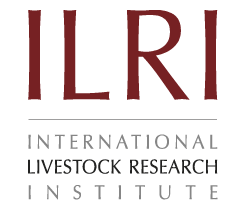Reduced Overgrazing and Rangeland Rehabilitation
Summary
Rising population and increasing demand for animal products place excess pressure on land leading to overgrazing and rangeland degradation. This situation results in soil erosion, nutrient depletion, water scarcity and loss of biodiversity; and too often leads to conflicts between wandering pastoralists and sedentary farmers. Climate change exacerbates this situation, yet technologies exist to combat rangeland degradation. What may be lacking is the investment to empower communities to act locally to reduce the negative environmental impacts of overgrazing and land degradation, and the political will to resolve conflicts, allowing communities to take decisive actions that better manage their pastures and rangelands.
About the Solution
Successful rangeland management involves access to both grazing areas and water points; and regulating the movement of herds across and between them. Overgrazing occurs when the carrying capacity of these lands is exceeded, or when grazing animals overstay on land. Available technologies to combat rangeland degradation includes rotational grazing, afforestation through silvo-pastoralism, fodder production, improved pasture management, sustainable intensification of ruminant production, soil and water conservation, and policy interventions. The carrying capacity is based upon quantifying Tropical Livestock Units (TLU) that are supported on one hectare of land throughout the year. This is equivalent to about ten small ruminants on one hectare of established pasture and as little as five or six animals on drier rangeland. Stocking rate is increased through the introduction of improved forage species and better grazing management. Appropriate stocking reduces overgrazing and allows for land recovery. Silvo-pastoralism incorporates more trees into rangeland, usually through the introduction of fast-growing leguminous trees; acting to provide forage and fodder, shade, and windbreaks. In some cases, shrubs may be planted along the slope contour to control erosion and improve water capture.
Rangeland management and rehabilitation is critical to maintaining the ecosystem services across large areas of Africa utilized by pastoralists and agro-pastoralists. These lands are of particular importance to climate change mitigation. Grazing management is a priority across the Sahel as a means to combat desertification. Rehabilitation addresses multiple land degradation challenges including feed scarcity, soil erosion, soil fertility depletion, water conservation, carbon sequestration, and income generation.
“Participatory Rangeland Management” facilitates engagement of stakeholders to work together within innovation platforms to improve the management of rangeland. Steps in this process include identifying at risk rangeland resources and users, linking to rangeland management institutions to develop response plans and stakeholder agreements, assigning new roles to various stakeholders that address declining productivity, and providing local communities increased control in this process.
A key aim of rangeland management is to achieve improved and sustained ecosystem services and provide better livelihoods among affected stakeholders. This involves better management of vegetation, water, and soil, with particular regard to the forage and fodder those lands provide. Outcomes include maintaining vegetation cover, arresting water and soil loss from uncontrolled runoff, and reducing encroachment of invasive, less palatable bush and tree species. Management mechanisms involve adjusting grazing intensity, controlling the movement of livestock, matching herd composition to rangeland vegetation and existing wildlife, and controlling activities around water points. Key is rotational grazing, periodic re-seeding, water harvesting, and monitoring incremental gains. Controlled grazing may require destocking to have fewer, more productive animals or replacing larger (cattle) with smaller ruminants (goats and sheep).
Commercialization
Commercially available
Solution Images
Institutions



